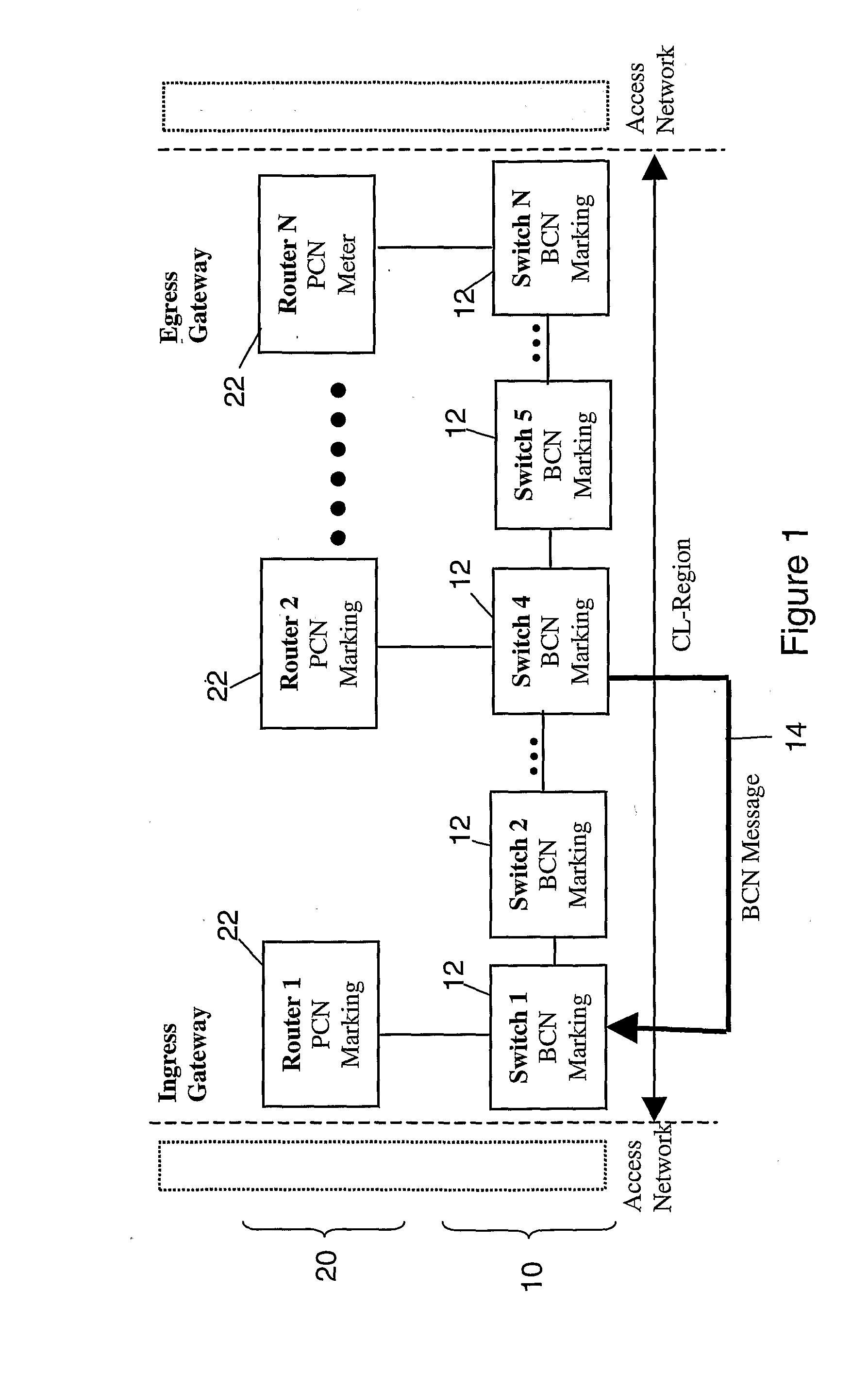Method and system for congestion marking
a congestion marking and packet switching technology, applied in data switching networks, frequency-division multiplexes, instruments, etc., can solve the problem that feeding congestion information derived from mpls into ip does not provide the same early congestion detection
- Summary
- Abstract
- Description
- Claims
- Application Information
AI Technical Summary
Benefits of technology
Problems solved by technology
Method used
Image
Examples
Embodiment Construction
[0062]Embodiments of the present invention will now be described with respect to the drawings.
[0063]As noted previously, FIG. 1 illustrates typical network elements, in terms of a plurality of routers 22 provided in the network layer 20, and a plurality of switches 12 forming the links between routers 22, in the data link layer 10. Packets from higher layers access the core network via an access network, and are fed to the ingress gateway shown as router 1 in the controlled load region of the network. Router 1 determines the routing for the received packets, and passes the packets to its associated data link layer switch, in this case switch 1, for transmission to the next hop router in the network layer. The next hop between router 1 and router 2 in the network layer may comprise several individual data links, formed from switches 1 to 4 in the data link layer 10. Typically, the data link layer may comprise an Ethernet, or the like.
[0064]At the data link layer the network layer pac...
PUM
 Login to View More
Login to View More Abstract
Description
Claims
Application Information
 Login to View More
Login to View More - R&D
- Intellectual Property
- Life Sciences
- Materials
- Tech Scout
- Unparalleled Data Quality
- Higher Quality Content
- 60% Fewer Hallucinations
Browse by: Latest US Patents, China's latest patents, Technical Efficacy Thesaurus, Application Domain, Technology Topic, Popular Technical Reports.
© 2025 PatSnap. All rights reserved.Legal|Privacy policy|Modern Slavery Act Transparency Statement|Sitemap|About US| Contact US: help@patsnap.com



